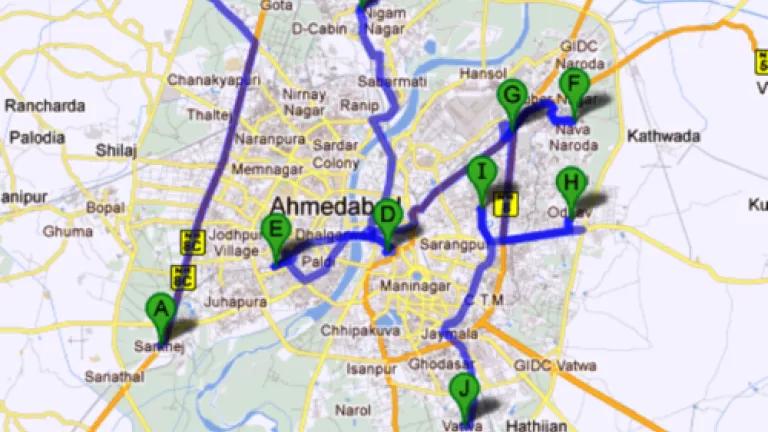
Our partners in India tell me that it’s an unusually warm November, requiring fans and air-conditioning during the day. While these warm winter temperatures are uncomfortable, the scorching summer temperatures – starting as early as March – pose life-threatening risks to local populations. Thankfully, there has been a recent breakthrough in our work to guard against extreme heat threats. Last week, the Ahmedabad government and the Indian Metrological Department announced plans to install ten new weather gauges, a huge improvement over the single gauge currently in the city.
The local government plans to provide land in ten locations across six zones of the city for automatic rain gauge, temperature recorder, and humidity measurement units. Measuring the heat and humidity throughout Ahmedabad will enable the local government to warn local communities of impending heat waves, which is critical to protecting the most vulnerable residents from heat exhaustion, heat stroke, and heat-related deaths.
The local government’s plan to install these new gauges is a remarkable step forward since my visit last month and marks tremendous progress since our initial discussions over a year ago. Last December, our partners, the Public Health Foundation of India (PHFI) and the Indian Institute of Public Health (IIPH) in Gandhinagar, and I met with local and state officials about developing strategies to protect communities from extreme heat, including climate change-related temperature increases. During the initial conversations, we had difficulty identifying the location of single existing weather gauge and discovered that local hospitals and community leaders were unaware of impending temperature increases and even accurate, current temperatures. A few months later, in March 2010, we convened local leaders and international health experts to kickoff our discussions to develop research and strategies for extreme heat. Our workshop’s key outcomes included installing additional temperature gauges to measure temperature, implementing a system to warn the public of increasing temperatures, and gaining a better understanding urban heat island effects.
Ahmedabad officials are proposing the following locations for ten gauges as shown on the map below: Sarkhej (A), Ognaj(B), Chandkheda(C), Astodia(D), Vasna(E), Narod(F), Memco(G), Odhav(H), Bapunagar(I), and Vatva(J). The local government is also planning to develop a community-based extreme heat warning system.
Proposed location of weather gauges in Ahmedabad (via Google Maps)
By installing the additional weather gauges, Ahmedabad is taking a crucial step toward establishing an effective heat health early warning system. Along with partners PHFI and IIPH, we will continue to engage with local officials and stakeholders to ensure and support progress in safeguarding a vulnerable population from extreme heat.
(Co-Authored by Neha Mathew, NRDC India Initiative Intern)
